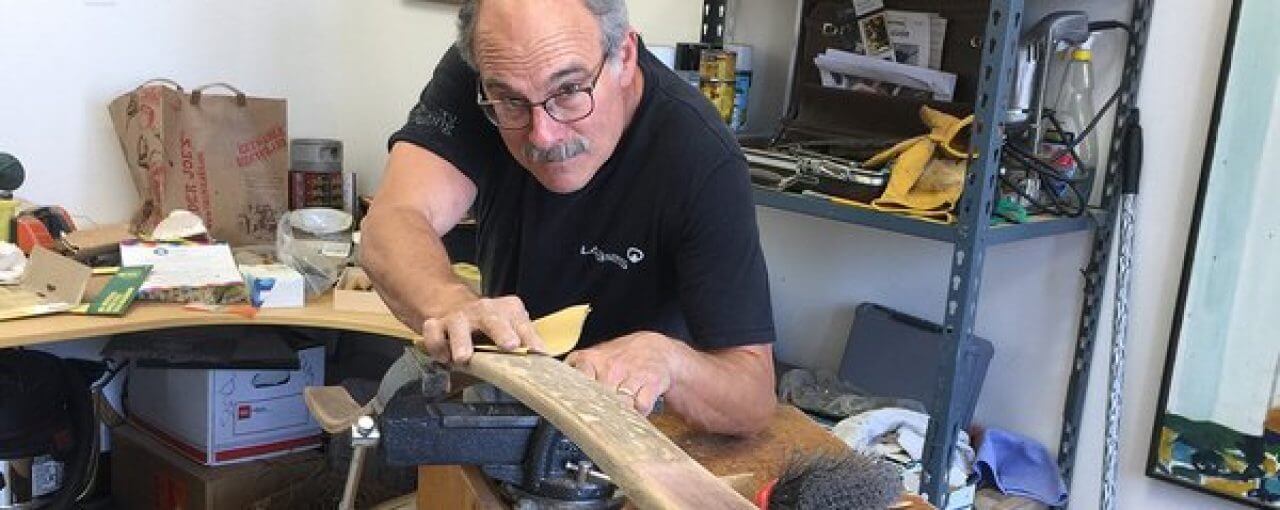See Kesselman’s work in WTP Vol. VI #6.
Inside the Studio offers a behind-the scenes peek into the work environments of WTP artists, as well as insight into their creative process within these resonate spaces.
By Jennifer Nelson, WTP Feature Writer
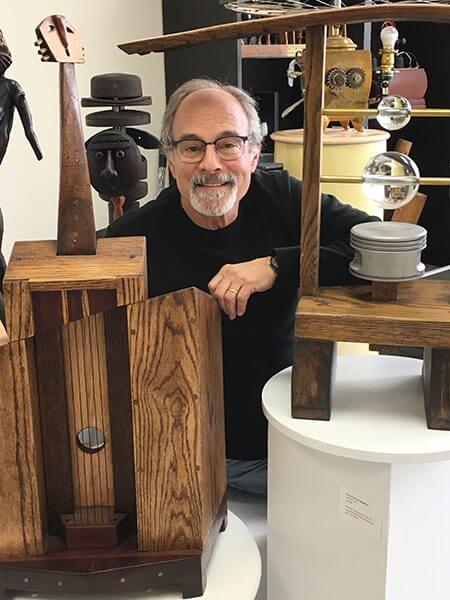
Michael Kesselman loves going to his studio at the Peninsula Museum of Art (PMA) in Burlingame, California. There, he has a clear and simple purpose: create art. It also helps that the studio is only a seven-minute drive from his home. “I leave my window open so I can spit sunflower seeds, but my car is filthy because the wind spits them back inside,” says Kesselman. “That, for me, is art. For all the energy and intention, my car still looks like an ashtray. It’s funny, ironic and mundane, yet somehow beautiful.”
Four years ago, Kesselman was juried into a studio at the museum; at the time, he couldn’t find work in the field of professional philanthropy. It was young, well-educated people in the Bay Area who were getting jobs—and at lower pay due to little seniority. “I was resentful at first, but then glad for the twist of fate that made me a full-time sculptor,” he said.
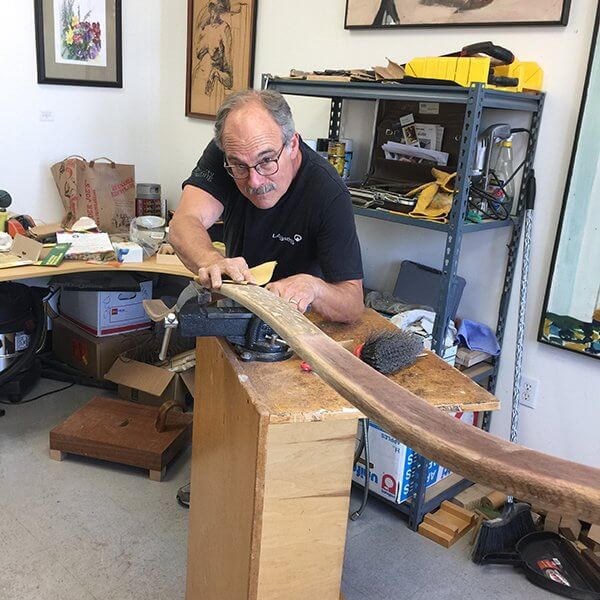
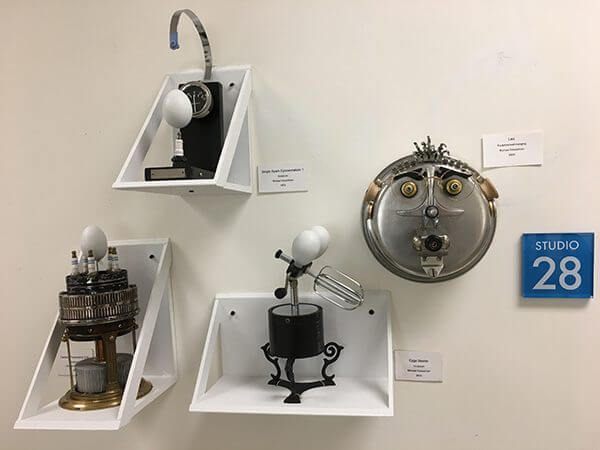
PMA provides studios for thirty professional painters and sculptors who work in wood, stone, bronze, and mixed-media fabrication. Visitors are welcome to view artists at work in their studios. Through open doors, they can witness how artists visualize and paint a landscape using different styles, including traditional, Impressionist, Fauvist, Cubist, and abstract. They can watch a sculptor discover the form within a log or stone—a subtractive, rather than additive process. “People are fascinated by human beings who look genuinely contented or compelled to do things that seem important, mysterious, or stupid,” says Kesselman. “Everybody’s secretly jealous of artists.”
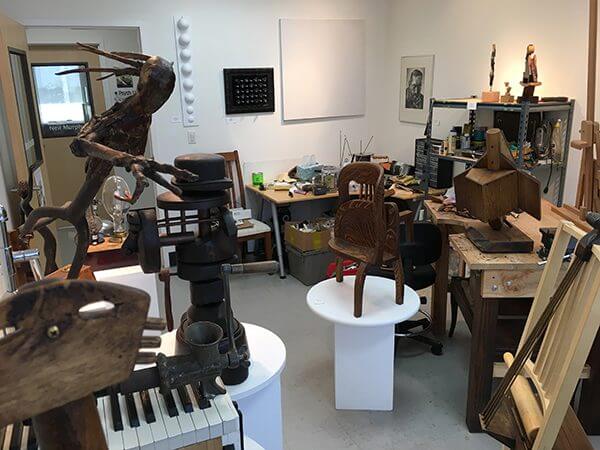
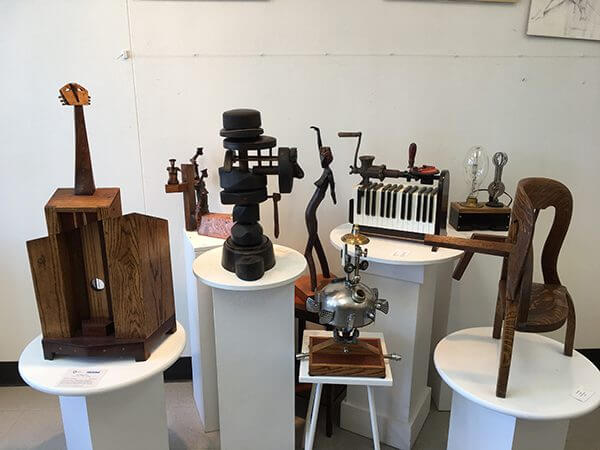
The eighteen-thousand-square-foot space also boasts five galleries for rotating exhibitions, an art resource library, a permanent collection, and gift store. Admission to the museum, which is open from Wednesday to Sunday, is free. Adults can take classes in painting furniture, weaving with metal, making hats, and painting with oils. Children ages five to twelve can create a variety of projects in art classes. Twice a year, the facility holds open-studio nights when artists can display their work, their goal to be a place where community members can appreciate and learn about art.
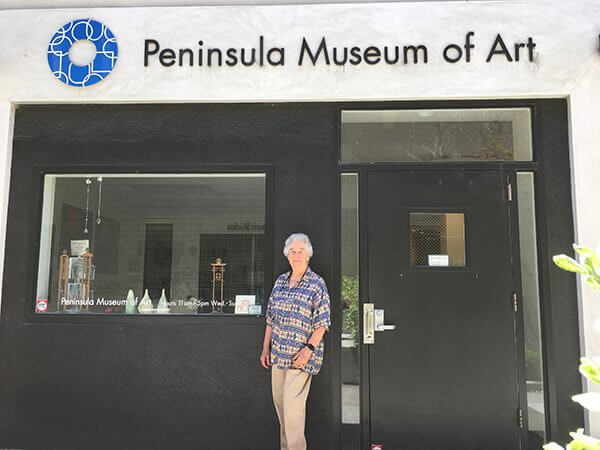
In 2013, Ruth Waters, a sculptor, founded the museum. This is different from many art museums, which are founded by male philanthropists or major collectors. For years, Waters had run an arts center and collected art from fellow artists and her travels. But it wasn’t until Charles Homer, a local philanthropist, donated one million dollars that she could remodel and move into the Burlingame museum. Waters “wouldn’t take no for an answer when she offered a city back east the opportunity to turn a decrepit torpedo factory into a living breathing museum,” said Kesselman. “When she moved out west, she did the same thing in the Bay Area, creating a thriving art institution out of an industrial eyesore.”
When Kesselman arrives at his studio, he sweeps the floor from the previous day’s dust and scraps, and pushes to the perimeter of the room boxes of wood and plumbing and electrical components. Then, he picks up where he left off: “Art, for me, is taking things apart and putting things together that usually don’t belong. When I’m done, if I’m successful, the new thing has a composition that looks correct and true and uniquely appropriate. It has its own identity, like your uncle or sister or Mona Lisa.”
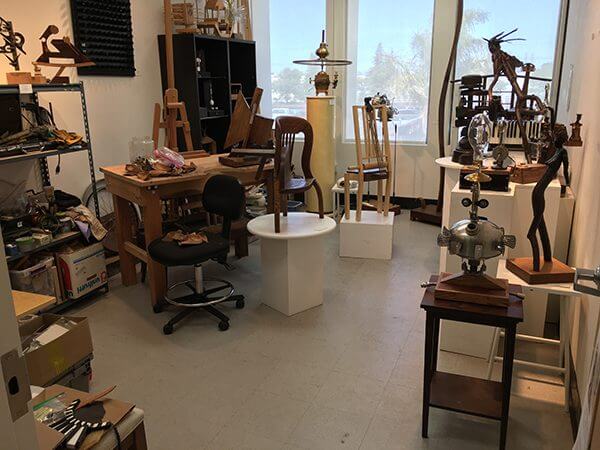
Copyright 2018 Woven Tale Press LLC. All Rights Reserved.

